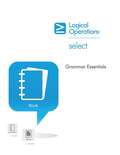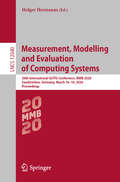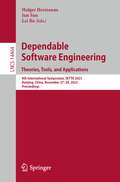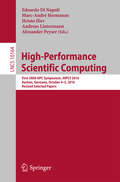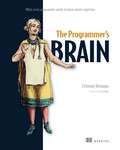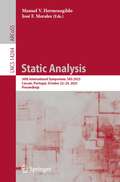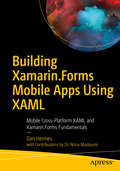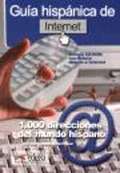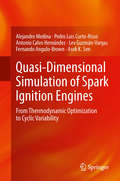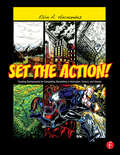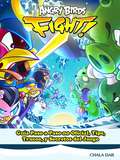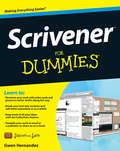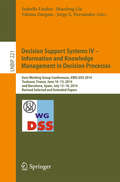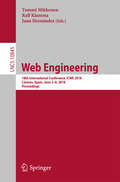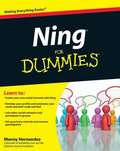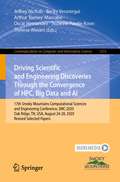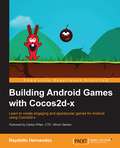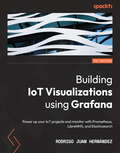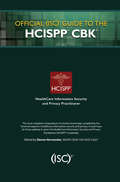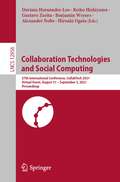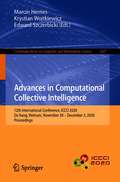- Table View
- List View
Grammar Essentials
by Susan HermanImproving your grammar will help you deliver polished and professional written communications. Correct grammar and a refined, concise writing style can help you clearly articulate your ideas to others, streamline the directions and instructions that you deliver, and create impressive presentations and reports.
Das gute Webinar: Das ganze Know How für bessere Online-Präsentationen, ein Praxisratgeber: Online präsentieren und Kunden gewinnen (X.media.press)
by Anita Hermann-Ruess Max OttIn diesem Buch lernen Sie anschaulich und praxisnah, wie Sie ein gutes Webinar organisieren, produzieren und live durchführen.Sie erhalten Antworten auf die Fragen: Was sind Webinare überhaupt? Wie können Sie das Format „Webinar“ in Ihrem Unternehmen sinnvoll einsetzen? Welche Technik benötigen Sie für gute Webinare? Wie produzieren Sie Präsentationen onlinegerecht? Wie halten Sie ein Webinar überzeugend und fesselnd live? Wie nutzen andere Unternehmen und Organisationen dieses Format heute schon erfolgreich?Sechs Kapitel führen Sie in die Welt der Webinare ein mit vielen Materialien, Checklisten, Plänen und Inspirationshilfen. Auf einer extra Website zum Buch erhalten Sie die wichtigsten Vorlagen zum Herunterladen, ein Bonuskapitel zum Thema Onlinemarketing, Beispiel-Webinare zum Anschauen und viele weitere Informationen.
Measurement, Modelling and Evaluation of Computing Systems: 20th International GI/ITG Conference, MMB 2020, Saarbrücken, Germany, March 16–18, 2020, Proceedings (Lecture Notes in Computer Science #12040)
by Holger HermannsThis book constitutes the proceedings of the 20th International GI/ITG Conference on Measurement, Modelling and Evaluation of Computing Systems, MMB 2020, held in Saarbrücken, Germany, in March 2020. The 16 full papers presented in this volume were carefully reviewed and selected from 32 submissions. They are dealing with scientific aspects of measurement, modelling and evaluation of intelligent systems including computer architectures, communication networks, distributed systems and software, autonomous systems, workflow systems, cyber-physical systems and networks, Internet-of-Things, as well as highly dependable, highly performant and highly secure systems.
Dependable Software Engineering. Theories, Tools, and Applications: 9th International Symposium, SETTA 2023, Nanjing, China, November 27–29, 2023, Proceedings (Lecture Notes in Computer Science #14464)
by Holger Hermanns Jun Sun Lei BuThis book constitutes the proceedings of the 9th International Symposium on Dependable Software Engineering, SETTA 2023, held in Nanjing, China, during November 27-29, 2023. The 24 full papers presented in this volume were carefully reviewed and selected from 78 submissions. They deal with latest research results and ideas on bridging the gap between formal methods and software engineering.
High-Performance Scientific Computing
by Marc-André Hermanns Hristo Iliev Andreas Lintermann Alexander Peyser Edoardo Di NapoliThis book constitutes the thoroughly refereed post-conference proceedings of the First JARA High-Performance Computing Symposium, JARA-HPC 2016, held in Aachen, Germany, in October 2016.The 21 full papers presented were carefully reviewed and selected from 26 submissions. They cover many diverse topics, such as coupling methods and strategies in Computational Fluid Dynamics (CFD), performance portability and applications in HPC, as well as provenance tracking for large-scale simulations.
The Programmer's Brain: What every programmer needs to know about cognition
by Felienne HermansYour brain responds in a predictable way when it encounters new or difficult tasks. This unique book teaches you concrete techniques rooted in cognitive science that will improve the way you learn and think about code.Summary In The Programmer&’s Brain: What every programmer needs to know about cognition you will learn: Fast and effective ways to master new programming languages Speed reading skills to quickly comprehend new code Techniques to unravel the meaning of complex code Ways to learn new syntax and keep it memorized Writing code that is easy for others to read Picking the right names for your variables Making your codebase more understandable to newcomers Onboarding new developers to your team Learn how to optimize your brain&’s natural cognitive processes to read code more easily, write code faster, and pick up new languages in much less time. This book will help you through the confusion you feel when faced with strange and complex code, and explain a codebase in ways that can make a new team member productive in days! Purchase of the print book includes a free eBook in PDF, Kindle, and ePub formats from Manning Publications. About the technology Take advantage of your brain&’s natural processes to be a better programmer. Techniques based in cognitive science make it possible to learn new languages faster, improve productivity, reduce the need for code rewrites, and more. This unique book will help you achieve these gains. About the book The Programmer&’s Brain unlocks the way we think about code. It offers scientifically sound techniques that can radically improve the way you master new technology, comprehend code, and memorize syntax. You&’ll learn how to benefit from productive struggle and turn confusion into a learning tool. Along the way, you&’ll discover how to create study resources as you become an expert at teaching yourself and bringing new colleagues up to speed. What's inside Understand how your brain sees code Speed reading skills to learn code quickly Techniques to unravel complex code Tips for making codebases understandable About the reader For programmers who have experience working in more than one language. About the author Dr. Felienne Hermans is an associate professor at Leiden University in the Netherlands. She has spent the last decade researching programming, how to learn and how to teach it. Table of Contents PART 1 ON READING CODE BETTER 1 Decoding your confusion while coding 2 Speed reading for code 3 How to learn programming syntax quickly 4 How to read complex code PART 2 ON THINKING ABOUT CODE 5 Reaching a deeper understanding of code 6 Getting better at solving programming problems 7 Misconceptions: Bugs in thinking PART 3 ON WRITING BETTER CODE 8 How to get better at naming things 9 Avoiding bad code and cognitive load: Two frameworks 10 Getting better at solving complex problems PART 4 ON COLLABORATING ON CODE 11 The act of writing code 12 Designing and improving larger systems 13 How to onboard new developers
Static Analysis: 30th International Symposium, SAS 2023, Cascais, Portugal, October 22–24, 2023, Proceedings (Lecture Notes in Computer Science #14284)
by Manuel V. Hermenegildo José F. MoralesThis book constitutes the refereed proceedings of the 30th International Symposium on Static Analysis, SAS 2023, held in Lisbon, Portugal, in October 2023. The 20 full papers included in this book were carefully reviewed and selected from 40 submissions. Static analysis is widely recognized as a fundamental tool for program verification, bug detection, compiler optimization, program understanding, and software maintenance. The papers deal with theoretical, practical and application advances in the area.
Building Xamarin.Forms Mobile Apps Using XAML: Mobile Cross-Platform XAML and Xamarin.Forms Fundamentals
by Dan Hermes Nima MazloumiLeverage Xamarin.Forms to build iOS and Android apps using a single, cross-platform approach. This book is the XAML companion to the C# guide Xamarin Mobile Application Development. You'll begin with an overview of Xamarin.Forms, then move on to an in-depth XAML (eXtensible Application Markup Language) primer covering syntax, namespaces, markup extensions, constructors, and the XAML standard. XAML gives us both the power of decoupled UI development and the direct use of Xamarin.Forms elements. This book explores the core of the Xamarin.Forms mobile app UI: using layouts and FlexLayouts to position controls and views to design and build screens, formatting your UI using resource dictionaries, styles, themes and CSS, then coding user interactions with behaviors, commands, and triggers. You'll see how to use XAML to build sophisticated, robust cross-platform mobile apps and help your user get around your app using Xamarin.Forms navigation patterns. Building Xamarin.Forms Mobile Apps Using XAML explains how to bind UI to data models using data binding and using the MVVM pattern, and how to customize UI elements for each platform using industry-standard menus, effects, custom renderers, and native view declaration. What You Will LearnCreat world-class mobile apps for iOS and Android using C# and XAMLBuild a UI decoupled from C# code and XAML Design UI layouts such as FrameLayout, controls, lists, and navigation patterns Style your app using resource dictionaries, styles, themes, and CSS Customize controls to have platform-specific features using effects, custom renderers, and native views Who This Book Is For XAML and C# developers, architects, and technical managers as well as many Android and iOS developers
Guía hispánica de Internet: 1,000 direcciones del mundo hispánico
by Alfredo González HermosoNo disponible
Quasi-Dimensional Simulation of Spark Ignition Engines: From Thermodynamic Optimization to Cyclic Variability
by Antonio Calvo Hernández Lev Guzmán-Vargas Asok K Sen Fernando Angulo-Brown Pedro Luis Curto-Risso Alejandro MedinaBased on the simulations developed in research groups over the past years, Introduction to Quasi-dimensional Simulation of Spark Ignition Engines provides a compilation of the main ingredients necessary to build up a quasi-dimensional computer simulation scheme. Quasi-dimensional computer simulation of spark ignition engines is a powerful but affordable tool which obtains realistic estimations of a wide variety of variables for a simulated engine keeping insight the basic physical and chemical processes involved in the real evolution of an automotive engine. With low computational costs, it can optimize the design and operation of spark ignition engines as well as it allows to analyze cycle-to-cycle fluctuations. Including details about the structure of a complete simulation scheme, information about what kind of information can be obtained, and comparisons of the simulation results with experiments, Introduction to Quasi-dimensional Simulation of Spark Ignition Engines offers a thorough guide of this technique. Advanced undergraduates and postgraduates as well as researchers in government and industry in all areas related to applied physics and mechanical and automotive engineering can apply these tools to simulate cyclic variability, potentially leading to new design and control alternatives for lowering emissions and expanding the actual operation limits of spark ignition engines
Set the Action!: Creating Backgrounds For Compelling Storytelling In Animation, Comics, And Games
by Elvin HernandezCreate the Gotham for your Batman, the African savannah for your Simba, or the bustling newsroom for your Clark Kent. Background, setting, environment.whatever you call it, it is the silent character in the visual story, and a dynamic and compelling setting can define and hone the action and drama of your story. If you're in the habit of creating disembodied characters or adding backgrounds as an afterthought, Set the Action! will help you understand and utilize the importance of the setting in your narrative. Understand perspective, blocking, and color-and focus your narrative by establishing and designing your setting to interact with characters and story.
Asphalt 8 Airborne Wiki, Trucos, Armería, Descarga de la Guía No Oficial
by Emmanuel Castro Hernández Josh Abbott* * Versión guía no oficial Consejos avanzada y Guía de Estrategia . Esta es la guía más completa y detallada sólo se encontrará en línea . Disponible para descarga instantánea en su teléfono móvil, dispositivo de libros electrónicos , o con tapas de cartulina . Esto es lo que va a obtener con la compra de esta guía de juego avanzado y detallado profesional. - Consejos y estrategias profesionales . - Trucos y Hacks . - Secretos, Consejos, Trucos , desbloqueables , y trucos usados por los jugadores profesionales ! - ¿Cómo obtener toneladas de dinero en efectivo / Monedas . - Y mucho más ! Renuncia: Este producto no está asociada , afiliada , aprobación , certificado o patrocinado por el propietario del copyright original . Todas las marcas comerciales y marcas registradas que aparecen en este libro electrónico son propiedad de sus respectivos dueños.
Angry Birds Fight! Guía Paso a Paso no Oficial, Tips, Trucos, y Secretos del Juego
by Emmanuel Castro Hernández Joshua AbbottHay un Nuevo juego inspirado en Angry Birds, ¡Angry Birds Action! Es un estilo de juego "beat-em up" 3D basado en una trama de la película Angry Birds. Mientras que en las versiones anteriores del juego, todo lo que necesitas es un poco de suerte y habilidad para ganar noventa niveles, esta historia se centra en Red, que es acusado por los otros pájaros por la destrucción de su aldea. Red tiene que probar su inocencia a los otros encontrando evidencia.
CSR Racing 2 Hacks del Juego, Apk, Tips para descargar la Guía no Oficial
by Emmanuel Castro Hernández Joshua AbbottCSR Racing 2 es la continuación de CSR Racing, y finalmente ha llegado. Lanzado por Zynga y Natural Motion. Aunque parece el mismo que la primera versión (carreras de arranques, mejorando tu propio coche y comprando otros) es, de hecho, diferente. Así que estamos aquí para ayudarte mientras te damos trampas, tips y trucos por escrito, ¡especialmente para este juego! Sólo recuerda, no uses esos tips en la vida real. ¡te meterías en problemas!
Scrivener For Dummies
by Gwen HernandezNo matter what you want to write, Scrivener makes it easier. Whether you're a planner, a seat-of-the-pants writer, or something in between, Scrivener provides tools for every stage of the writing process. Scrivener For Dummies walks you step-by-step through this popular writing software's best features. This friendly For Dummies guide starts with the basics, but even experienced scriveners will benefit from the helpful tips for getting more from their favourite writing software.Walks you through customizing project templates for your project needsOffers useful advice on compiling your project for print and e-book formats Helps you set up project and document targets and minimize distractions to keep you on track and on deadlineExplains how to storyboard with the corkboard, create collections, and understand their valueShows you how to use automated backups to protect your hard work along the wayFrom idea inception to manuscript submission, Scrivener for Dummies makes it easier than ever to plan, write, organize, and revise your masterpiece in Scrivener.
Decision Support Systems IV - Information and Knowledge Management in Decision Processes: Euro Working Group Conferences, EWG-DSS 2014, Toulouse, France, June 10-13, 2014, and Barcelona, Spain, July 13-18, 2014, Revised Selected and Extended Papers (Lecture Notes in Business Information Processing #221)
by Jorge E. Hernández Fátima Dargam Shaofeng Liu Isabelle LindenThis book contains extended and revised versions of a set of selected papers from two events organized by the Euro Working Group on Decision Support Systems (EWG-DSS), which were held in Toulouse, France and Barcelona, Spain, in June and July 2014. Overall, 8 papers were accepted for publication in this edition after a rigorous review process through at least three internationally known experts from the EWG-DSS Program Committee and external invited reviewers. The selected papers focus on knowledge management and sharing, and on information models developed to support various decision processes.
Web Engineering: 18th International Conference, Icwe 2018, Cáceres, Spain, June 5-8, 2018, Proceedings (Theoretical Computer Science and General Issues #10845)
by Juan Hernández Ralf Klamma Tommi MikkonenThis book constitutes the refereed proceedings of the 18th International Conference on Web Engineering, ICWE 2018, held in Cáceres, Spain, in June 2018.The 18 full research papers and 17 short papers presented together with 2 practice papers, 6 demonstration papers, and 5 tutorials were carefully reviewed and selected from 103 submissions. The papers cover research areas such as Web application modeling and engineering; Web infrastructures and architectures; execution models; human computation and crowdsourcing applications; Web application composition and mashups; Social Web applications; Semantic Web applications; Web of Things applications; big data and data analytics; and security, privacy, and identity.
Ning For Dummies
by Manny HernandezNing is a cool, free social networking platform, and you can learn how to use Ning quickly and easily with Ning For Dummies. If you have a cause to promote or a passion about a topic, here's how to explore existing networks and interact with others who share your obsession, as well as how to start one of your own.Begin by joining other networks and participating in groups. Then you'll find out how to create your own social network, develop your profile, customize your network's look and feel, set up privacy controls, oversee participation, and manage all the details.Investigate existing networks, see how to join private networks, and manage your profile for privacyAdd photos, videos, and music files to existing networksDiscover the comment wall, rate items from members, moderate comments on your blog, and respond to eventsStart a discussion, invite people to an event, or create a groupSet up your network, decide if it should be public or private, research the competition, and find your nicheChoose a good Web address and learn to monitor traffic with Google AnalyticsGive your main page character with custom widgets and personalized featuresNing is fun, easy, and free. Ning For Dummies shows you how to plan your network so it stands out from the crowd, manage interaction, include multimedia, and more!
Driving Scientific and Engineering Discoveries Through the Convergence of HPC, Big Data and AI: 17th Smoky Mountains Computational Sciences and Engineering Conference, SMC 2020, Oak Ridge, TN, USA, August 26-28, 2020, Revised Selected Papers (Communications in Computer and Information Science #1315)
by Oscar Hernandez Jeffrey Nichols Becky Verastegui Arthur ‘Barney’ Maccabe Suzanne Parete-Koon Theresa AhearnThis book constitutes the revised selected papers of the 17th Smoky Mountains Computational Sciences and Engineering Conference, SMC 2020, held in Oak Ridge, TN, USA*, in August 2020.The 36 full papers and 1 short paper presented were carefully reviewed and selected from a total of 94 submissions. The papers are organized in topical sections of computational applications: converged HPC and artificial intelligence; system software: data infrastructure and life cycle; experimental/observational applications: use cases that drive requirements for AI and HPC convergence; deploying computation: on the road to a converged ecosystem; scientific data challenges.*The conference was held virtually due to the COVID-19 pandemic.
Building Android Games with Cocos2d-x
by Raydelto HernandezIf you have a basic understanding of the C++ programming language and want to create videogames for the Android platform, then this technology and book is ideal for you.
Building IoT Visualizations using Grafana: Power up your IoT projects and monitor with Prometheus, LibreNMS, and Elasticsearch
by Rodrigo Juan HernandezThe IoT developer's complete guide to building powerful dashboards, analyzing data, and integrating with other platformsKey FeaturesConnect devices, store and manage data, and build powerful data visualizationsIntegrate Grafana with other systems, such as Prometheus, OpenSearch, and LibreNMSLearn about message brokers and data forwarders to send data from sensors and systems to different platformsBook DescriptionGrafana is a powerful open source software that helps you to visualize and analyze data gathered from various sources. It allows you to share valuable information through unclouded dashboards, run analytics, and send notifications. Building IoT Visualizations Using Grafana offers how-to procedures, useful resources, and advice that will help you to implement IoT solutions with confidence. You'll begin by installing and configuring Grafana according to your needs. Next, you'll acquire the skills needed to implement your own IoT system using communication brokers, databases, and metric management systems, as well as integrate everything with Grafana. You'll learn to collect data from IoT devices and store it in databases, as well as discover how to connect databases to Grafana, make queries, and build insightful dashboards. Finally, the book will help you implement analytics for visualizing data, performing automation, and delivering notifications. By the end of this Grafana book, you'll be able to build insightful dashboards, perform analytics, and deliver notifications that apply to IoT and IT systems.What you will learnInstall and configure Grafana in different types of environmentsEnable communication between your IoT devices using different protocolsBuild data sources by ingesting data from IoT devicesGather data from Grafana using different types of data sourcesBuild actionable insights using plugins and analyticsDeliver notifications across several communication channelsIntegrate Grafana with other platformsWho this book is forThis book is for IoT developers who want to build powerful visualizations and analytics for their projects and products. Technicians from the embedded world looking to learn how to build systems and platforms using open source software will also benefit from this book. If you have an interest in technology, IoT, open source, and related subjects then this book is for you. Basic knowledge of administration tasks on Linux-based systems, IP networks and network services, protocols, ports, and related topics will help you make the most out of this book.
Official ((ISC)2 Press)
by Steven HernandezHealthCare Information Security and Privacy Practitioners (HCISPPSM) are the frontline defense for protecting patient information. These are the practitioners whose foundational knowledge and experience unite healthcare information security and privacy best practices and techniques under one credential to protect organizations and sensitive patient data against emerging threats and breaches. The Official (ISC)2 (R) Guide to the HCISPPSM CBK (R) is a comprehensive resource that provides an in-depth look at the six domains of the HCISPP Common Body of Knowledge (CBK). This guide covers the diversity of the healthcare industry, the types of technologies and information flows that require various levels of protection, and the exchange of healthcare information within the industry, including relevant regulatory, compliance, and legal requirements. Numerous illustrated examples and tables are included that illustrate key concepts, frameworks, and real-life scenarios. Endorsed by the (ISC)(2) and compiled and reviewed by HCISPPs and (ISC)(2) members, this book brings together a global and thorough perspective on healthcare information security and privacy. Utilize this book as your fundamental study tool in preparation for the HCISPP certification exam.
Collaboration Technologies and Social Computing: 27th International Conference, CollabTech 2021, Virtual Event, August 31 – September 3, 2021, Proceedings (Lecture Notes in Computer Science #12856)
by Davinia Hernández-Leo Reiko Hishiyama Gustavo Zurita Benjamin Weyers Alexander Nolte Hiroaki OgataThis volume constitutes the proceedings of the 27th International Conference on Collaboration Technologies and Social Computing, CollabTech 2021, held August/September 2021. Due to VOVID-19 pandemic is was held virtually. The 5 full and 4 work-in-process papers presented in this volume were carefully reviewed and selected from 19 submissions. The papers focus on innovative technical, human and organizational approaches to expand collaboration support including computer science, management science, design science, cognitive and social science.
The Measure of All Minds
by José Hernández-OralloAre psychometric tests valid for a new reality of artificial intelligence systems, technology-enhanced humans, and hybrids yet to come? Are the Turing Test, the ubiquitous CAPTCHAs, and the various animal cognition tests the best alternatives? In this fascinating and provocative book, José Hernández-Orallo formulates major scientific questions, integrates the most significant research developments, and offers a vision of the universal evaluation of cognition. By replacing the dominant anthropocentric stance with a universal perspective where living organisms are considered as a special case, long-standing questions in the evaluation of behavior can be addressed in a wider landscape. Can we derive task difficulty intrinsically? Is a universal g factor - a common general component for all abilities - theoretically possible? Using algorithmic information theory as a foundation, the book elaborates on the evaluation of perceptual, developmental, social, verbal and collective features and critically analyzes what the future of intelligence might look like. Provides a universal framework integrating the evaluation of development, social and communication skills, and collective intelligence Compares the behavior evaluation of humans, non-human animals, and computers Blends cutting-edge theory and technology with historical context
Advances in Computational Collective Intelligence: 12th International Conference, ICCCI 2020, Da Nang, Vietnam, November 30 – December 3, 2020, Proceedings (Communications in Computer and Information Science #1287)
by Marcin Hernes Krystian Wojtkiewicz Edward SzczerbickiThis book constitutes refereed proceedings of the 12th International Conference on International Conference on Computational Collective Intelligence, ICCCI 2020, held in Da Nang, Vietnam, in November – December 2020. Due to the the COVID-19 pandemic the conference was held online. The 68 papers were thoroughly reviewed and selected from 314 submissions. The papers are organized according to the following topical sections: data mining and machine learning; deep learning and applications for industry 4.0; recommender systems; computer vision techniques; decision support and control systems; intelligent management information systems; innovations in intelligent systems; intelligent modeling and simulation approaches for games and real world systems; experience enhanced intelligence to IoT; data driven IoT for smart society; applications of collective intelligence; natural language processing; low resource languages processing; computational collective intelligence and natural language processing.
